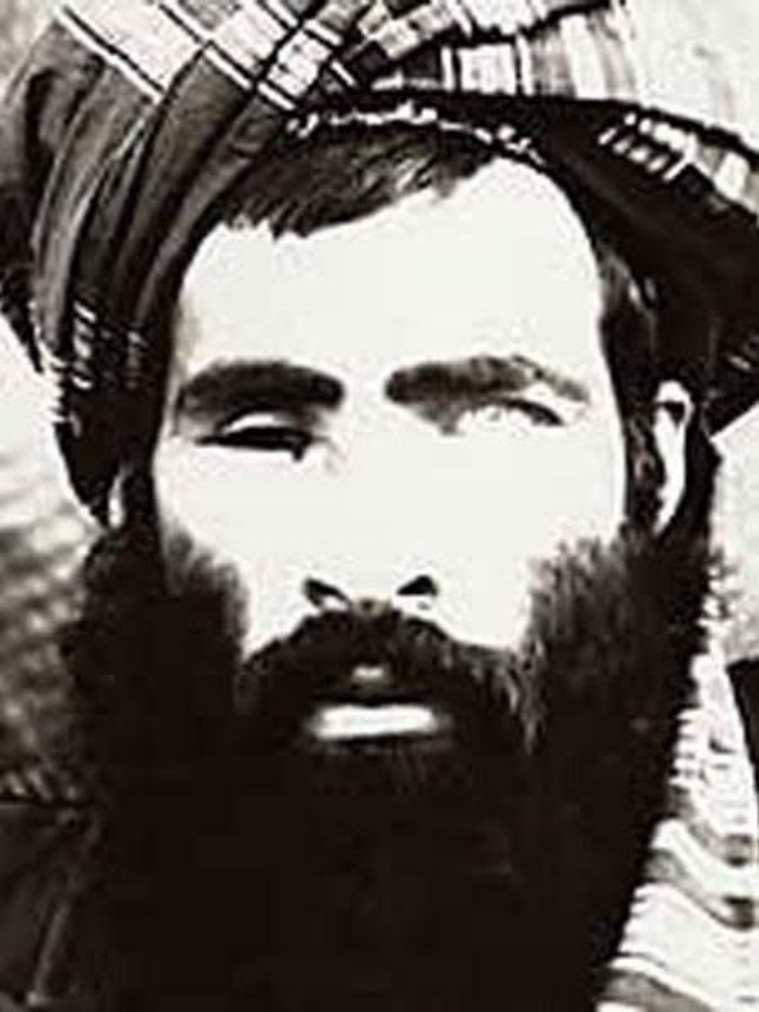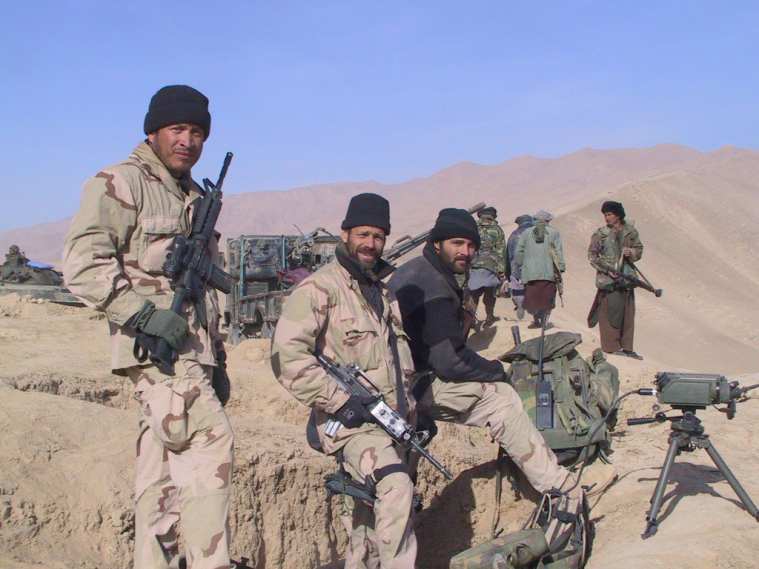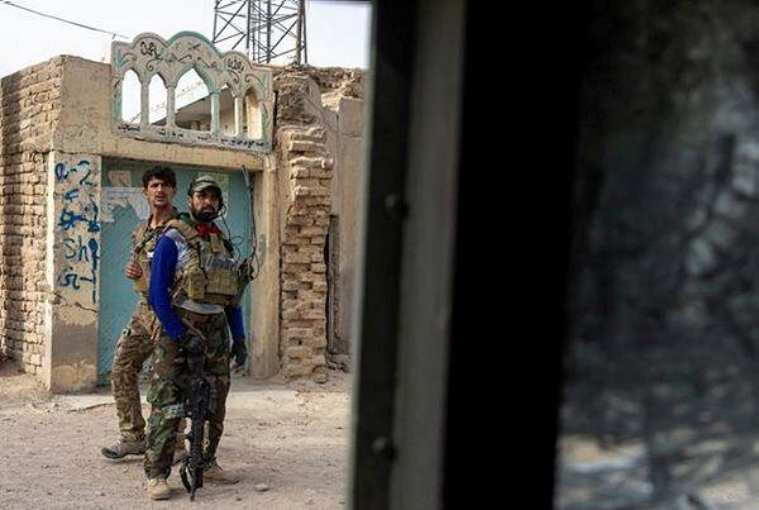As the Taliban gain ground, districts across Afghanistan are being ruled by force and fear. But for many international observers and Afghans on the ground, who the Taliban actually are remains a mystery
Afghanistan is a country in permanent pursuit of equilibrium. Bound to its religion, constrained by its culture and fractured by its past, Afghanistan today is the legacy of an eternity of chaos, infighting and foreign occupation. With the Americans gone, the government in disarray and the Taliban on the rise, Afghans must once again adapt to changing circumstances. This three-part series will explore those changes and attempt to decipher the new political reality.
Part one will look at the current leadership structure of the Taliban and how the organisation is intrinsically linked to the concept of a theocratic state.
Part two will address how Taliban rule will impact the Afghani people and how the progression or regression of human rights will be linked to differing cultural sensibilities across the country.
Part three will introduce the challenges to Taliban rule, examining how Afghanistan’s history of conflict indicates the probability of continued oscillation in leadership.
Under the watchful eye of the Shawali family, locked in the Kirka Sharif Shrine in Kandahar, lies the sacred cloak of Muhammad. Believed to have been worn by the Prophet, this cloak was brought to Afghanistan by Ahmad Shah Durrani who founded the country in 1747. From the old king of Afghanistan, Zahir Shah, to its current President, Ashraf Ghani, many Afghan leaders have sought legitimacy and guidance in the presence of Muhammad’s cloak. However, only one, Mullah Omar, has ever dared to wear it.
According to a legend, in 1996, when Omar removed the cloak from the shrine and donned it in front of a large crowd, several people fainted, while others feverishly chanted ‘Amir al-Mu’minin’ or ‘Commander of the Faithful’. In that moment, Omar became the undisputed leader of the Holy War and soon after, bolstered by public support, went on to conquer most of the country as the Emir of a radical insurgent group known as the Taliban.
In February 2020, the Taliban and the US Government struck a deal in Doha that committed the US to withdrawal from Afghanistan and the Taliban to abstain from attacks on the US forces. Notably, that deal did not impose any significant frameworks for how the Taliban would operate within the current Afghan political system nor did it specify any guidelines for how they should govern in terms of human rights and democratic values.
Since the US began the process of withdrawal, the Taliban have made enormous strides, conquering 221 of Afghanistan’s 320 districts and fighting for control over an additional 113, as per the Long War Journal, a website that tracks the battles. The group is thought to be stronger in numbers than at any point since they were ousted in 2001 – with up to 85,000 full-time fighters according to recent NATO estimates.
“It is striking to me how fast the Afghan Security Forces are crumbling, the Taliban are dramatically on the march and the speed at which they are taking over is traumatic,” Vanda Felab-Brown, a Senior Fellow at the Brookings Institute, described the situation bluntly in a conversation with Indianexpress.com.
History of the Taliban
The Taliban emerged in the early 1990s in northern Pakistan, following the removal of Soviet troops from Afghanistan. It was a predominantly Pashtun movement that first appeared in religious seminaries mostly paid for by Saudi Arabia. Preaching a hardline version of Sunni Islam, the Taliban spent half a decade fighting for control over Afghanistan, promising to restore stability in the country by ruling it in accordance with Islamic law. By 1998, the Taliban were in control of almost 90 percent of Afghanistan. Ordinary Afghans had grown weary of the infighting amongst the Mujahedeen following the departure of the Soviets, and initially welcomed the Taliban, seeing them as a force against corruption, lawlessness and conflict.
However, as time went on, the group’s single-minded commitment to Sharia law, harsh social policies and ruthless delivery of justice undermined their early popularity. Under the Taliban, women were no longer allowed to leave their homes unaccompanied while men were forced to maintain a certain beard length. Music, dance and television were banned from society. Punishments for those who violated Taliban rules were public and severe. Adulterers were savagely beaten in front of their families, thieves had their hands chopped off and in one particularly gruesome incident in 1996, 225 women were rounded up and lashed for not adhering to the Taliban’s strict dress code.
In the aftermath of the 9/11 attacks, a NATO coalition led by the United States invaded Afghanistan and rapidly ousted the Taliban from power. In its place, the US established an Interim Afghan government, which ‘elected’ Hamid Karzai as its leader. Since then, Afghanistan, at least on paper, has remained a democracy. The Taliban meanwhile went back to their roots as an insurgent group, fighting battles across rural Afghanistan to wrestle back control from US troops and the Afghan Security Forces. It remains an insurgent group today. With the Taliban gaining ground once again, all of that may soon change. In light of these shifts, many may be wondering who the Taliban actually are; who are their leaders now, how are they different from the old Taliban, what are their policies and what is the likelihood of them retaining power in the long-term.
Carter Malkasian, a former advisor to the US Joint Chiefs of Staff, who spoke to Indianexpress.com via telephone, borrows a phrase from the recently-deceased American politician Donald Rumsfeld to summarise the situation. For Afghan citizens as well as foreign observers, the Taliban represents a “known unknown” and who they are and what they represent is anyone’s guess.
In order to understand the Taliban, it’s worth noting the conditions under which they were overthrown. Despite what many may believe, the Taliban was never strongly aligned with Al Qaeda before 9/11. After the attacks, US President George Bush issued the group an ultimatum – hand over Al Qaeda and Osama Bin Laden or be prepared to face the consequences. Mullah Omar, the cloak wearing founder of the Taliban, and its leader at the time, vehemently refused. When asked why by Rahimullah Yusufzai, one of the few journalists who ever interviewed him, the reclusive, one-eyed, Omar cited the tradition of Pashtun hospitality. “I don’t want to go down in history as someone who betrayed his guest. I am willing to give my life, my regime. Since we have given him refuge I cannot throw him out now.”
This staunch adherence to religion, custom and culture, however misguidedly interpreted, is what defines the Taliban. Throughout their brief period of rule, and long period of insurgency, it is the one thing that has remained constant. Internally, the group is dominated by hard-line religious scholars and despite shifts in public opinion and a changing world order, the Taliban are unlikely to deviate from their core doctrine. The Taliban are bound by religion and according to Ali Yawar Adili, a researcher with the Afghanistan Analysts Network based out of Kabul, the people under their control are in turn “bound by fear and terror,” circumstances that make it hard for them to resist the group’s dominance.
Internal structure of the Taliban
As mentioned, Mullah Omar was the founder of the Taliban and remains till date it’s longest serving leader. After the coalition entered Afghanistan, Omar went into hiding, spending 12 years reportedly residing near a US military base in the southern province of Zabul. Omar is said to have died in 2013, although his death was not reported until 2015.
According to Malkasian, “very few people in the Taliban had heard about it and I don’t know anybody outside the Taliban who knew.” This secrecy around Omar’s death, in Malkasian’s opinion, perfectly encapsulates the extent to which the Taliban keeps its internal governance private.
After Omar, Mullah Akhtar Mansour led the group, but his short reign was marred by an alleged internal leadership crisis in which Mohammad Yaqoob, the son of Omar, rejected his appointment. In 2016, only one year after taking over, Mansour was killed by a US drone strike and Hibatullah Akhundzada, the head of the Taliban’s Islamic courts, took his place.
Like Omar and Mansour, not much is known about Akhundzada. According to Malkasian, Akhundzada has never appeared on television and there are very few photographs that exist of him. His deputies, on the other hand, are relatively more prominent. His first deputy, Sirajuddin Haqqani, is the powerful head of the Haqqani network, a US-designated terrorist organisation with strong ties to Pakistan, Saudi Arabia and Al Qaeda. His second deputy, Mohammad Yaqoob, enjoys a strong following within the Taliban for his connection to Omar and recently replaced Ibrahim Sadr, a prominent field commander, as the head of the Taliban’s military affairs.
Several experts, including Antonio Giustozzi, a Taliban expert with the Royal United Services Institute in London, believe that Yaqoob is part of a more moderate faction of the Taliban along with Mullah Abdul Baradar who represented the group during the Doha negotiations with the US. Unlike Akhundzada, who reportedly issued most of the Taliban’s fatwas, Yaqoob and Baradar are thought to be less rigid and willing to favour a negotiated end to the conflict.
Prominent politicians in Afghanistan also seem to be willing to negotiate on behalf of the Taliban. Along with the group’s foreign spokesperson Suhail Shaheen, former Afghan President Hamid Karzai has spoken for the group internationally. Shaheen said in early July that he considered China to be a friend of Afghanistan and after meeting with Karzai this July, the Russian envoy to Afghanistan, Zamir Kabulov, stated that he believed the “Taliban were ready for a compromise.” Indian officials have also been in contact with the Taliban, although it is unclear whom exactly they spoke with. This tacit international recognition of the Taliban by other countries gives them valuable credibility and legitimacy on the global stage. Although it is worth noting that despite this relative thawing of diplomatic relations, the most prominent members of the Taliban remain highly controversial and the international community continues to view them as being affiliated with terrorism, extremism and fundamentalism.
The New Taliban
In part, due to the appointment of Yaqoob and Baradar, several publications have pointed to the emergence of a ‘new’ Taliban. One which is more moderate and structured than the Taliban that ruled Afghanistan from 1996 to 2001. Alluding to this, a recent report from the International Crisis group states, “as the Taliban have grappled over the last decade with the imperative to govern and provide services to civilians who have come under their influence, they have gradually adjusted some of their harshest stances on education, modern technology and media consumption – albeit to a degree that remains more restrictive than most Afghan government policies and often falls short of international human rights standards.”
This relative moderation, according to the United States Institute of Peace, extends to areas such as education, healthcare and criminal justice. In a 2019 report, the organisation states that in an attempt to avoid the foreign policy mistakes of the 1990s, in which the Taliban was recognised only by Pakistan, the UAE and Saudi Arabia, the organisation, under Mansour attempted to reform its external image. Along those lines, after 2014, the Taliban “regularly met in the Gulf States with UN officials to discuss measures to mitigate civilian harm and broaden humanitarian efforts.” The report adds that fighters on the ground had also established “workable (if heavily coercive) relationships with state and NGO actors in the education and health sectors” and had taken a more liberal stance on issues like women’s rights.
In interviews and publications, some Taliban leaders have even admitted to this shift, suggesting that in the past, the organisation was known as an insurgent group, not one that was expected to govern. As a result, they claim the Taliban never had a central doctrine and was therefore sometimes inflexible with their policies. Reports from the ground indicate that there are now provinces ruled by the Taliban in which women are allowed to go to school and leave the house unaccompanied by a male guardian. However, those freedoms are generally confined to areas that are culturally more liberal and are largely a by-product of the Taliban allowing its commanders to dictate local policy.
Abdul Basit, a researcher at the Nanyang Technological University of Singapore, who spoke to Indianexpress.com over the phone, addresses the idea that the Taliban has become more moderate but was generally sceptical of how that would play out in reality. Noting that the ‘new’ Taliban “have engaged in suicide attacks and fought side-by-side with Al Qaeda” he argues that “the concessions that they have made in the name of moderation is only for public consumption.”
When asked about the group’s push to include more Uzbeks, Tajiks and Hazaras within their ranks, Basit was reserved in his assessment. Despite this public demonstration of change, he believes an inclusive Taliban is still one in which its members adhere to a strict religious doctrine. Basit does acknowledge the shift however and speculates that the moderate Baradar is most likely to be the face of the Taliban in order to appease the West. Ultimately though, he says, “I wouldn’t use the word moderate to describe any element of the Taliban. There are hardliners and less hardliners in the organisation.”
Cultural changes, greater foreign scrutiny and the need to integrate Afghanistan into the global economy will likely dictate some of the Taliban’s prospective policies. However, whether they return to their rigid Islamic policies from the 1990s or adopt a surface-level form of pluralistic theocracy along the lines of Iran is yet to be seen. What is almost certain however, is that the Taliban must and will rule in accordance with Islamic doctrine. It is a core part of their identity and more importantly, it’s the only justification they have for existing at all.
Source: Read Full Article






